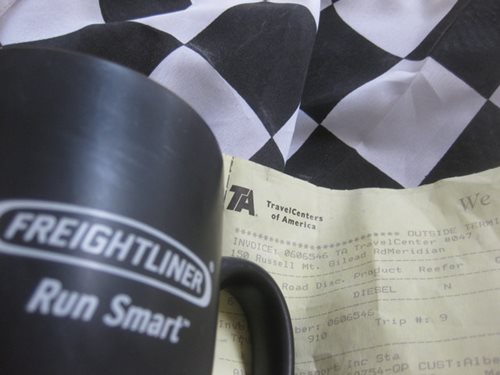
For years, so many athletes tried and failed to run a mile in less than 4 minutes that people began to say it was physically impossible. Prior to the 4 minute barrier being broken, the world record for a mile was 4 minutes and 1.3 seconds, set by Gunder Hagg of Sweden in 1945. Due to the psychological challenge faced by the athletes, several runners committed themselves to being the first runner to cover a mile in less than 4 minutes.
On May 6th, 1954, Roger Bannister of Harrow, England broke into the 3 minute zone with a time of 3 minutes 59.4 seconds. Many people used his story to demonstrate the power of positive thought. The fact is it wasn’t just positive thought, it was his unique training which propelled him to success. Of course, he believed that he could break the record as did many other runners of that time. In fact, his record only stood for 46 days.
With the amount of coverage that the 10 mpg gets from the trucking media, 10 mpg has become trucking’s 4 minute mile. Reaching 10 mpg for me has been an ongoing challenge for the last 4-5 years. I’ve been able to attain fuel mileage in excess of 10 mpg on many individual driving days. However, I’ve never been able to average 10 mpg.
On Thursday, March 14th after traveling 1,438 miles in 2 ½ days, I hit the 10 mpg goal on a normal fuel run. I could have traveled much farther before fueling however I stopped in Meridian, MS where I normally fuel on this particular route. The exact fuel mileage was 10.053 mpg as calculated from figures at the fuel pump. This corresponded with the fuel mileage gauge in the dash of my 2014 Cascadia Evolution.
The details of the route are as follows: I began in Lafayette, LA to Laredo, TX and finally refueled in Meridian , MS. The GVW was between 60-65,000 lbs. and the only difference from my normal operation was the cruise speed which was set at 63 mph instead of 65 mph.
, MS. The GVW was between 60-65,000 lbs. and the only difference from my normal operation was the cruise speed which was set at 63 mph instead of 65 mph.
I attribute the success of reaching 10 mpg to the advanced aerodynamics of the Cascadia Evolution, the new Detroit DD15 engine/DT12 transmission and the many aerodynamic devices added to my trailer to enhance fuel efficiency. The tractor is the most valuable player in this battle with the air as it’s literally at the front line of this fight. By having the air flow smoothly across the tractor, it allows for maximum benefit from the aerodynamic devices which have been added to the trailer. The benefit comes from the airflow being less turbulent than it would be from a lesser aerodynamic tractor.
Below, check out many of the new features of the Cascadia Evolution.